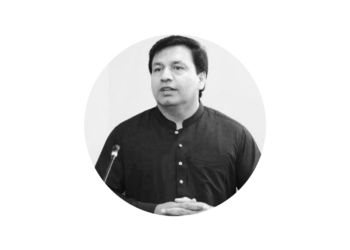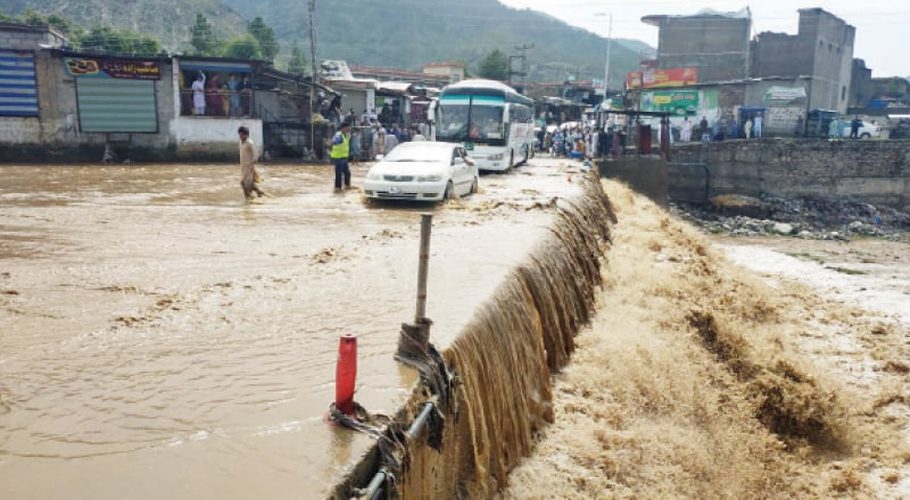In Pakistan, all four characteristics of the state, society, economy, politics, and institutions are at the point of inefficiency. It is time to rethink the “disastrous ideas” it has adopted for over 230 million people since its inception and reconsider the “inertia” it has perpetuated. States are like organisms that develop by being fed incrementally and in a gradual manner as the body grows.
Sometimes malnutrition and childhood trauma lead to the underdevelopment of the human body. In the same way, there are some flawed ideas in the literature on states that hinder full-scale development. Our state wasn’t able to bloom in full swing because of fault lines at the start of the new state and the underdevelopment of the urgent institutions–civil society and the bureaucratic administration. Efficacious policy consideration and an inclusive institutional framework are the keys to state development, just as medicine is the cure for the growth of the body.
Socio-economic and political reforms can restore our lost glory. Keeping in view this strategic reality, the future of Pakistan is almost impossible to predict, specifically, because of the internal and external challenges. Belatedly economists have begun to appreciate that the strength of an economic system depends on the strength of the political structure. Generally, political parties of Pakistan are taken as incapable for both bringing reforms and integrating interest articulation.
Because of this civilian default, our state is still in form of transitional democracy where one step forward leads to two-step backwards formula. The politics of Pakistan takes place within the framework established by the constitution. The country is a federal parliamentary republic in which provincial governments enjoy a high degree of autonomy and residuary powers. The Government consists of three branches: executive, legislative and judicial. The executive branch consists of the Cabinet and is led by the Prime Minister.
It is totally independent of the legislative branch that consists of a bicameral parliament. The President acts as the ceremonial figurehead while the people-elected Prime Minister acts as the Chief Executive (of the executive branch) and is responsible for running the federal government. There is a bicameral Parliament with the National Assembly as a Lower house and the Senate as an upper house.
Even after more than 70 years of existence and around 17 years of continuous rule by elected governments, Pakistan could not attain the desirable levels of political stability and economic growth. The political and economic situation in the country currently has become so adverse that nothing could be forecast with certainty about the future of the present government.
The foremost reason for this is the lack of political and economic stability in Pakistan and the resultant social chaos has been that democracy as a culture and institution has failed to flourish and evolve in the country. Various related factors have been responsible for the failure of democracy to evolve as an institution in Pakistan. These factors need to be identified, analyzed and documented by the policymakers so that a sustainable political and economic stability can be achieved.
The very first portion is all about demography, urbanization, economy and education. 60% population consists of young age and up till 2030, youth will cross 130 million. In order to manage this youth bulge economic growth must be at rate of over 6% but the average counted growth is 4.9 % only which is a sign of alarm for us. One important factor in economic crippling is ever increasing defense budget and less exports compared to imports. In addition, educational gap is started to be filled by madrassas and, thus, modern educated scholars usually get this message across the social milieu: As political parties are weak in structure and programmatic way, the political system will be found in between unstable and weak democracy with alarming possibility of outright dictatorship. This could be witnessed in poor performance of governance with falling indicators. As far as media and the Judiciary is concerned, both are devoid of playing any constructive role.
Globalization is not the major problem but our failed measures in form of weak governance, low literacy rate and absence of land reforms has made the approach critical for our country. Technology is the future. The masses of irrelevant classes are growing and we are nowhere.
Our contribution at the international level is just restricted to contributing labor in advanced and First World countries. Remittances are good, but access to technology and the opportunity to contribute to science, automation, and artificial intelligence is the future that state institutions should strive for. It is need of Pakistan to expand its tech infrastructure and develop science education. Through this, we will become relevant and essential to the internationalist global society of the future.
Moreover, the institutions of the state get their human resources mostly from among the masses socialized into highly tribal and ultraconservative social structures, therefore, they do not have the capacity and comprehension of how to support democracy. Principally and ideally these state institutions must support democracy and more importantly promote the values of democracy: equality, equity, justice and freedom by ensuring good governance through transparency, accountability, rule of law and participation.
However, this ideal has been unachievable because the parliamentary political system has reinforced the traditional and reactionary social structure instead of overcoming its shortcomings. No doubt the challenges are enormous which are injecting unpredictability and uncertainty in the South Asian politics with reference to Pakistan. But, we still can entertain better future proposals if take care of few warning signs like that of critical situation with India, governance issues, foreign loans, Islamists appeasement policy, economic stagnation and bad record of state/nation building.




























